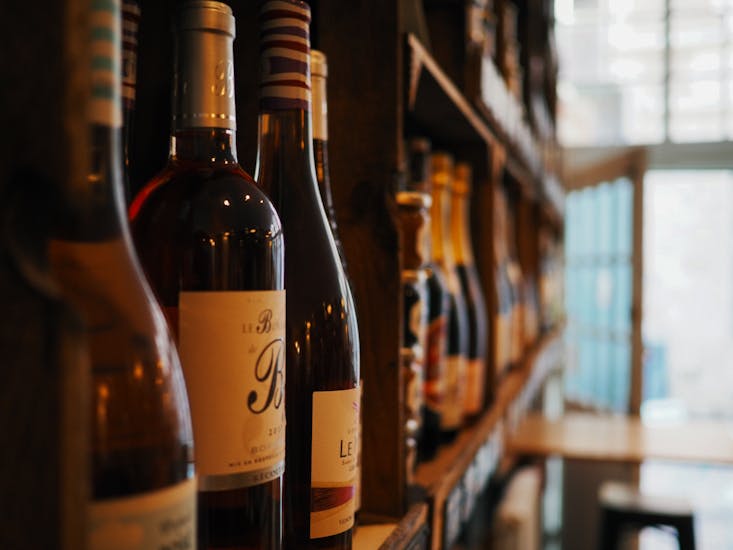The Bottling Prep That Turns Good Wine Into a Professional Product

There’s a moment in every winemaker’s journey when the wine itself stops being the only thing that matters. The liquid in the barrel might be exceptional, but getting it to market in a way that reflects that quality requires a completely different skill set. Bottling preparation doesn’t get the same romantic attention as harvest or fermentation, but it’s where good wine either becomes a professional product or stays stuck in the enthusiast category.
The gap between a well-made wine and a market-ready product comes down to dozens of small decisions that happen before a single bottle gets filled. These aren’t the glamorous parts of winemaking, but they’re the parts that determine whether customers take the product seriously when they see it on a shelf.
The Foundation: Material Selection That Reflects Your Standards
Choosing packaging materials feels administrative until something goes wrong. A subpar closure can ruin months of careful winemaking. A bottle that doesn’t match the wine’s style sends confusing signals about quality. These decisions happen long before bottling day, and they set the stage for everything that follows.
The closure decision alone involves more variables than most people realize. Natural cork, synthetic alternatives, screw caps, and glass stoppers each have different implications for how the wine will age, how customers will perceive it, and what kind of investment makes sense for a particular production scale. Premium wines destined for years of cellaring need closures that allow minimal oxygen exchange while maintaining a perfect seal. Wines meant for early consumption have different requirements entirely.
This is where relationships with reliable suppliers make a tangible difference. Working with providers who understand wine production means access to quality corks for wine bottles that match specific aging goals and budget realities. The right supplier doesn’t just deliver materials—they help wineries navigate grades, specifications, and the technical details that affect wine preservation over time.
Bottle selection carries similar weight. The glass needs to complement the wine’s character without overwhelming it. A bold Cabernet deserves different presentation than a delicate Pinot Grigio. The color of the glass affects light exposure and aging potential. The weight and shape influence how customers perceive value before they ever taste what’s inside.
Quality Control Before the First Pour
Professional bottling operations run on systems that catch problems before they become expensive mistakes. Setting up proper quality control doesn’t require industrial-scale equipment, but it does require thinking through every step where something could go wrong.
Pre-bottling preparation starts with verifying that every material meets specifications. Closures should be inspected for consistency in size and condition. Bottles need checking for chips, cracks, or residue that could affect the wine. Labels should be reviewed for printing quality and accuracy. These checks seem tedious until a batch gets bottled with defective materials and has to be redone.
The bottling environment itself needs preparation. Clean, temperature-controlled spaces prevent contamination and ensure consistent results. Equipment should be sanitized and tested before production begins. Having backup supplies on hand prevents a single missing component from shutting down an entire bottling run.
Timing coordination becomes critical when multiple elements need to come together simultaneously. Wines should be at the right temperature for bottling. Filtration equipment (if used) needs to be ready. Labels need to arrive before bottles get filled. The logistics puzzle of getting everything aligned on the same day requires planning that starts weeks in advance.
The Details That Separate Amateur From Professional
Professional presentation comes from sweating the small stuff that casual observers might not consciously notice but definitely respond to. Capsules that sit perfectly flush on the bottle neck. Labels applied without bubbles or misalignment. Fill levels that match across every bottle in a case. These details accumulate into an impression of quality and care.
Consistency matters more than perfection on any single bottle. A winery that produces 500 bottles with identical presentation looks more professional than one that produces 500 bottles where each one varies slightly. Achieving that consistency requires standardized processes, proper equipment maintenance, and attention to technique throughout the entire bottling run.
The final packaging stage—how bottles get packed, protected, and prepared for distribution—deserves the same attention as earlier steps. Cases should be sturdy enough to protect glass during shipping. Individual bottles might need protective wrapping depending on the distribution channel. Documentation like vintage information and handling instructions should be clear and accessible.
Building Systems That Scale With Growth
Early-stage wineries often handle bottling with makeshift solutions that work fine for small batches. The challenge comes when production increases and those informal methods start creating bottlenecks or quality inconsistencies. Building scalable systems from the beginning, even when producing modest quantities, prevents growing pains later.
This means documenting processes so they can be repeated reliably. Writing down specifications for materials, recording equipment settings, and creating checklists for quality control steps. When bottling happens once or twice a year, memory isn’t a reliable system. Written procedures ensure that whoever handles bottling (whether that’s the winemaker, a hired crew, or eventually dedicated staff) can maintain consistent standards.
Supplier relationships become even more valuable as production scales. Wineries that have established partnerships with material suppliers can increase order volumes without scrambling to find new sources or accept compromised quality. Those relationships also provide flexibility during unexpected situations—when a bottling run needs to happen earlier than planned or when additional materials are needed on short notice.
The Investment That Protects Everything Else
Looking at bottling preparation purely as a cost misses the bigger picture. Every dollar spent on quality materials and proper systems protects the much larger investment already made in vineyard management, winemaking expertise, and time. A $2 cork protecting a $40 bottle of wine isn’t an expense—it’s insurance for everything that came before.
The reputation implications extend beyond individual bottles. Customers who experience consistent quality across multiple purchases become repeat buyers and brand advocates. Distributors and retailers who receive professionally packaged products take the brand more seriously. These downstream effects multiply the value of doing bottling preparation right.
When wine reaches customers in the condition it left the winery, looking exactly how it should, and aging the way it was intended to, that’s not luck. That’s the result of bottling preparation that turned good wine into a professional product. The work happens behind the scenes, but the results are visible in every bottle that leaves the cellar.








Comments are closed.